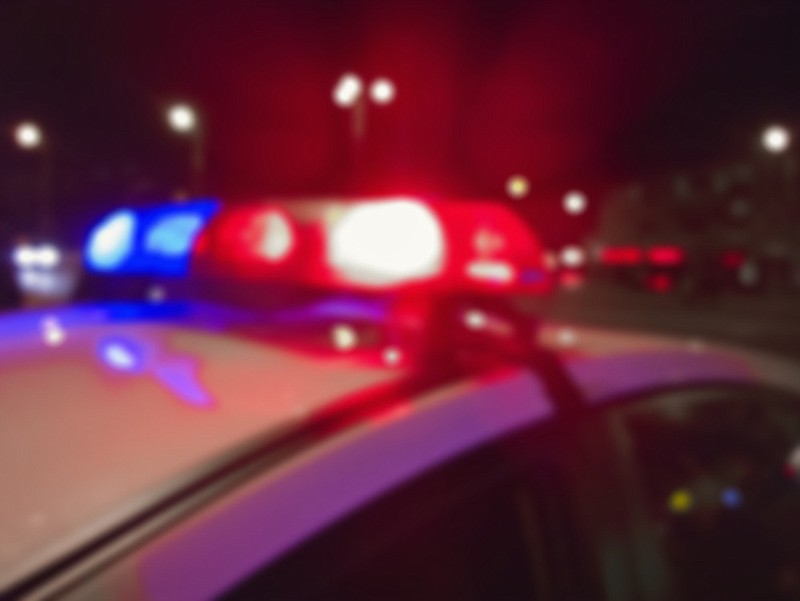On edge as we all are, it is increasingly disconcerting to watch the clips of the Derek Chauvin trial in Minnesota while even more police-involved deaths and assaults continue to play out across our nation - even one at a school on Monday in Knoxville.
No, the circumstances are not all the same - or even similar - yet they still give us cause for pause. They give us reason to question, again, the training and support that police do or don't receive. And it is clear that if we don't begin to focus more on this, we will be short-changing not only ourselves and other citizens, but also police officers.
* There was no excuse for Minneapolis police officer Derek Chauvin to hold his knee on the handcuffed George Floyd's neck for almost nine minutes last year - even as Floyd could be heard 27 times saying he couldn't breathe.
Now Chauvin is on trial for murder. Since Floyd's death, protests have erupted all over the nation. And with good cause: Those protests, too, demonstrate the clear need for police retraining and reform.
* There was no excuse for another Minnesota police veteran on Monday mistaking her service gun for a Taser and shooting an unarmed Black 20-year-old. For that matter, there was no excuse for pulling him over in a traffic stop for having air fresheners hanging from his rear-view mirror.
The 26-year police veteran, Kim Potter, 48, resigned Tuesday, as did her department's police chief.
* There was no excuse in Windsor, Virginia, last December for two officers pepper-spraying a Black and Latino U.S. Army officer to the ground and telling him he was going to "ride the lightning," a reference to the electric chair. The officers radioed they were pulling over a vehicle with no rear license plate and tinted windows. It was the soldier's brand new SUV and a cardboard license plate was posted in the rear window.
The officers, with guns trained on Army Second Lt. Caron Nazario through the driver's side window, shouted conflicting orders at him, telling him to put his hands out the window while also telling him to open the door and get out. Nazario repeatedly asked why he was pulled over but got no response. Frightened and unsure what to do, he told the officers he was scared to get out.
Police officer Joe Gutierrez, responded, "Yeah, you should be." Then the officers tried to pull the seat-belted Nazario out of the vehicle. When he asked that they call a police supervisor, Gutierrez pepper-sprayed him repeatedly. Nazario later got out of the SUV and again asked for a supervisor. Gutierrez responded with "knee-strikes" to his legs, knocking him to the ground. The officers then struck him multiple times, handcuffed him and interrogated him. They threatened to charge him with obstructing justice, eluding police and assaulting a law enforcement officer. Or, they told him, if he "would chill and let this go," they would release him with no charges.
They released him. Nazario filed a federal lawsuit. The Virginia governor, after seeing what he called the "disturbing" video, directed the Virginia State Police to investigate. Officer Gutierrez has been fired. It's unclear if action has or will be taken against the other officer.
* There was no excuse for a Knoxville high school to have lost five students to gun violence this year alone - one just on Monday when the latest teen to die was said to have turned a gun on a school resource officer who, with a swarm of other officers, confronted him in a school bathroom.
The resource officer was wounded. The teen was killed by another officer returning fire. The resource officer is hospitalized and recovering from a hip wound. The four other teen deaths all occurred separately since late January, according to school officials and news reports. So far three other teens have been charged in two of those shooting deaths.
Make no mistake: We need police officers - especially ones like Knoxville School Resource Officer Adam Willson. But we need all officers to be trained thoroughly in conflict resolution, anti-bias and de-escalation tactics - not the heavy-handed military-style force now trending with police organizations nationwide.
"The problem is we treat a police academy kind of like we treat a military boot camp," Lorenzo Boyd, a former law enforcement official and the director of the Center for Advanced Policing at the University of New Haven, told the Hechinger Report last year. "We should treat it more like a classroom setting where we're allowed to ask questions and use critical thinking skills."
Police academies began to adopt an aggressive, military training approach in the 1960s and 1970s, as political campaign slogans made much of the "war on drugs" and "law and order."
By 2006, the Bureau of Justice Statistics reported that police recruits in basic training spend a median of 60 hours on firearms instruction, 51 hours on self-defense skills, about 11 hours on cultural diversity, and eight hours on mediation and conflict resolution. By 2013, data found that academies had increased firearms training time by an average of 8 hours, while time spent on community policing rose by an average of just one hour - despite calls for greater focus on community policing law enforcement approaches.
We must do better than this. No one can watch the videos of George Floyd's death or the assault on Army Second Lt. Nazario and think they are seeing good policing. It is not. It would be bad behavior if your brother did it to you, and it's unacceptable behavior for a police officer.
